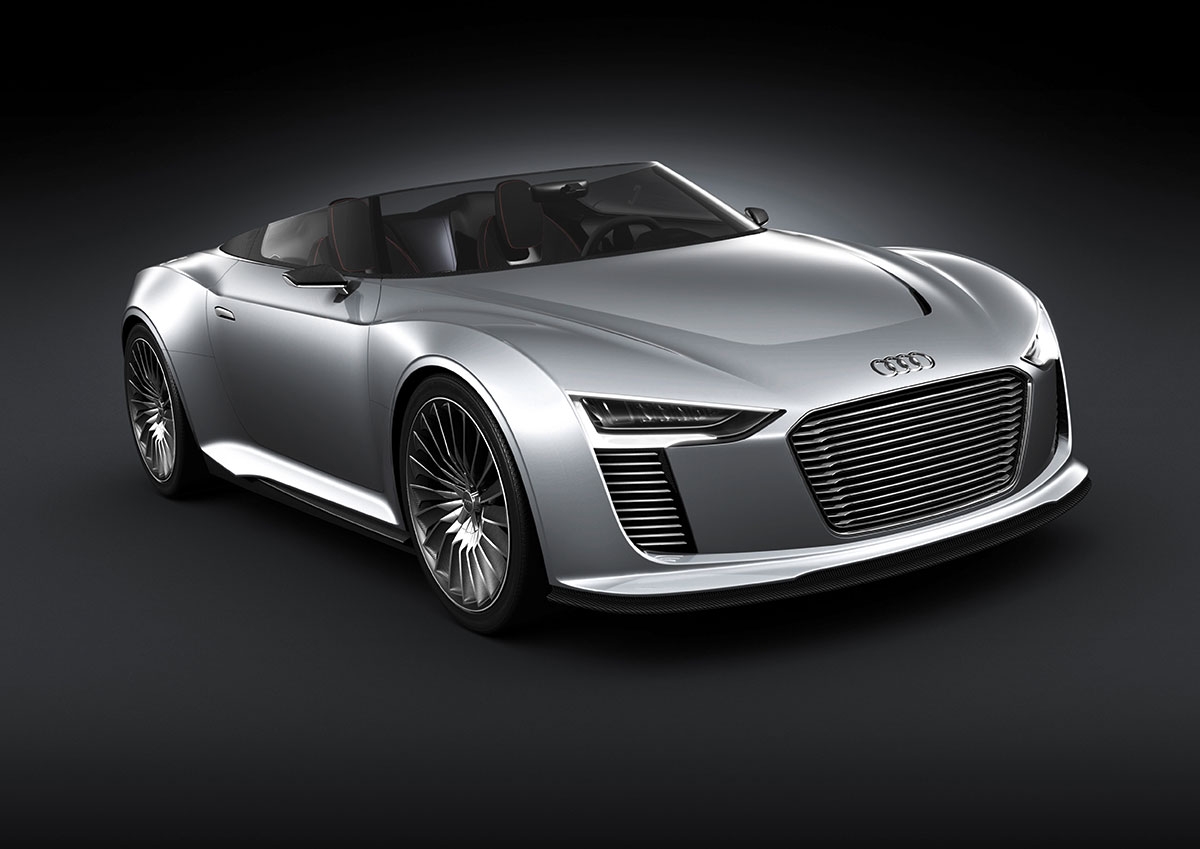In the last ten years, Audi has presented different prototypes with four, six, ten, ten and twelve cylinders. Do you remember them?
2007: the Audi Q7 Coastline
With a maximum power of 50cv and a maximum torque of 1,000 nm., The Audi Q7 V12 TDI prototype, presented at the Detroit Motor Show, was the precursor of the model that began to be manufactured in series in 2008.
The prototype was catapulted to the League of sports SUVs thanks to an acceleration from 0 to 100 in 5.5 seconds, and a maximum speed electronically limited to 250 km/h.
The six -liter V12 TDI technology included a Common Rail system, with piezoelectric injectors, which generated an injection pressure of up to 2,000 bars. The two VTG turbochargers generated a relative supercharging pressure of up to 1.6 bars. The crankshaft crankcase had been carried out in the foundry of vermicular graphite, and the cylinder benches were arranged at an ideal angle of 60 degrees from each other.
2008: the Audi R8 V12 Concept and the R8 Tdi Le Mans
With these two prototypes the brand referred to the victories of the Audi R10 TDI in 2006 and 2007 in the 24 hours of Le Mans. Like the competition vehicle, both models also set up a V12 TDI with 6 liters of displacement. The engine in central position was just behind the driver and co -pilot. With a power of 500 hp (368 kW) and 1,000 nm of torque, available the latter at 1,750 rpm, the biplaza accelerated in 4.2 seconds from 0 to 100 km/h, with a tip speed of more than 300 km/h. The consumption was below 10 liters to 100 kilometers.
2008: Audi A3 TDI Clubsport Quattro
This prototype of the Audi A3 TDI Clubsport Quattro presented a power of 224 hp (165 kW) and surrendered 450 nm of torque at 1,750 rpm. The acceleration of 0 to 100 km/h of this experimental car was produced in 6.6 seconds and reached a maximum speed of 240 km/h. The specific two -liter diesel values were 113.8 hp (83.8 kW) and 228.7 Nm per liter of cylindrated. A VTG turbocompressor greater than the serial engine pushed the air to the combustion cameras, and the Common Rail system injected the fuel at a pressure of 1,800 bars.
2010: Audi E-Tron Spyder
The Audi E-Tron Spyder was one of the protagonists of the Paris Motor Show of the year 2010. It was a convertible two-seater with a length greater than four meters. It had an aluminum structure, an outer layer of carbon fiber plastic material (CFRP) and a plug -in hybrid propulsion system.
The Audi E-Tron Spyder engine was a three-liter V6 TDI with biturbo supercharging, which boosted the rear wheels with a power of 300 hp (221 kW) and a 650 nm motor torque. In addition, two electric motors, with a yield of 64 kW and 352 Nm, acted on the front wheels. These could be operated separately and thus allowing the pair selectively. The acceleration of 0 to 100 km/h was achieved in 4.4 seconds and the peak speed was electronically limited to 250 km/h.
The electricity supply was carried out through a lithium -ion battery with a capacity of 9.1 kWh. The autonomy in electric mode was 50 kilometers; The average consumption at 100 km was 2.2 liters (59 grams of CO2 per kilometer).
2013: Audi Nanuk Quattro Concept
Audi presented the Nanuk Quattro Concept prototype in the Frankfurt Motor Show held in 2013. The innovation of this model was that it combined the concept of crossover with that of a Biplaza Coupé. As a propeller, a V10 TDI engine was used longitudinally in front of the rear axle. The powerful diesel, with a 5.0 -liter displacement, gave more than 544 hp of power and developed 1,000 Nm of torque at 1,500 rpm.
The Audi Nanuk Quattro Concept used a biturbo supercharging and the Audi Valvelift System (AVS) variable distribution system. The Common Rail system generated a pressure of up to 2,500 bars. Its acceleration of OA 100 km/h was achieved in 3.8 seconds, and its maximum speed reached 305 km/h, with an average consumption of 7.8 liters of fuel at 100 km.























































